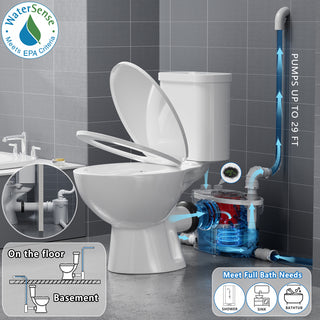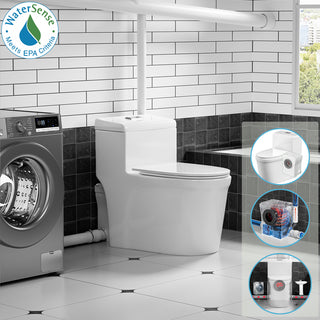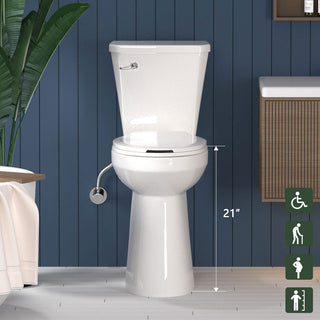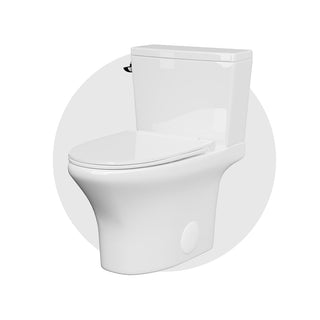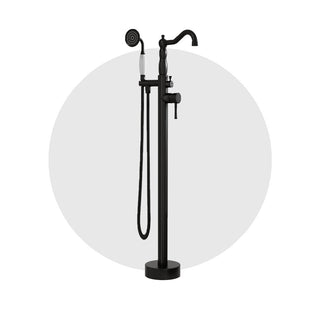As freshwater resources face growing pressure, more homeowners are turning to sustainable solutions to reduce their environmental impact. One increasingly popular idea: Can grey water be reused to flush toilets? The answer is yes—when properly managed, grey water offers a practical and eco-friendly way to save clean water without compromising comfort.
Here’s what you need to know.
What Is Grey Water?
Grey water refers to gently used water from non-toilet sources such as:
- Bathroom sinks
- Showers and tubs
- Washing machines
In fact, grey water makes up about 65% of household wastewater and is produced year-round. Although it may contain soap, grease, food particles, or hair, it carries fewer contaminants than black water and can often be safely reused after basic filtration or treatment. This makes grey water a plentiful and reliable resource when managed properly.
How to Use Grey Water to Flush Toilets
Using grey water for toilet flushing involves several essential steps and components:
- Collection tanks: These store grey water temporarily after it drains from showers or sinks.
- Filtration units: Basic filters remove hair, soap scum, and debris.
| Tip: Proper filtration is crucial to prevent solid buildup that can clog pumps, piping, inlet and outlet valves, flush flaps, sealing rings, and even the small flush holes around the toilet bowl and toilet jets. Poor filtration may also lead to organic matter accumulation, which encourages microbial growth. Over time, this can turn stored grey water into a slimy, foul-smelling liquid that damages equipment and contaminates the toilet.
- Pumps: Pressurize the treated grey water for delivery to toilet cisterns.
- Backflow prevention valves: Prevent any contamination of potable water supplies.
Basic treatment is generally recommended to help protect the toilet system, reduce maintenance issues, and extend equipment lifespan. Stored grey water should be used within 24 hours. Toilet flushing alone accounts for 25–30% of a typical household’s freshwater use, making it one of the most impactful ways to reuse grey water.
* With proper treatment, grey water can also be used for landscape irrigation—just be sure to check local regulations.
Is It Legal to Use Grey Water for Toilets?
Yes—under the right conditions and in many U.S. states. Regulations vary, but key states such as California, Arizona, Texas, New Mexico, Montana, and Washington permit grey water reuse for indoor flushing when systems meet specified standards and local approvals.
Highlights from state regulations:
-
California: Under Title 24, Part 5, Chapter 16A of the California Plumbing Code, treated grey water may be used for toilet flushing when properly filtered and isolated from potable water
-
Arizona: ADEQ represents treated grey water as Type 1 reuse, allowing direct indoor applications—including flushing—when flow is under 400 gpd and system labeling/backflow protection are in place
-
Texas: The Texas Administrative Code (§210.81–85) authorizes grey water for non-potable uses including toilet flushing and irrigation without a permit for systems under 400 gpd
-
New Mexico: Permits grey water reuse for toilet flushing and irrigation under Chapter 16 of the UPC—no permit is required if usage is under 250 gpd
* You can find more details on the official websites of the EPA and New Mexico State University.
-
Montana & Washington: Both states’ plumbing codes allow treated grey water to be used for toilets under their respective UPC-adopted rules
✅ What It Means for You
To comply with state laws, most systems must:
- Keep grey and drinking water plumbing entirely separate
- Include filtration, backflow prevention, and clear system labeling
- Meet daily flow limits (commonly 250–400 gpd) and pass local inspections
Before installing such a setup, consult your local building or environmental health department for specific requirements in your area.
Benefits of Grey Water Toilet Flushing
Switching to grey water for toilets offers multiple sustainability advantages:
- Saves fresh water: Toilets account for nearly 30% of indoor water use in many homes.
- Reduces strain on septic or sewage systems
- Decreases household utility bills over time
- Promotes conscious water use in drought-prone regions
Things to Keep in Mind
Before installing a grey water system for toilets, consider:
- Water quality: Grey water used in toilets should be free of grease and harsh chemicals.
- System complexity: Some systems require regular maintenance to prevent odor or buildup.
- Cost vs. savings: Grey water reuse can save money in the long run, but initial installation may be higher.
Final Thoughts
Grey water can be used for toilets, and doing so is a smart, sustainable choice for many households. With the right setup and compliance with local codes, you can significantly reduce your water footprint without sacrificing convenience.
📌 FAQ
Q1: Can I use shower water to flush my toilet directly?
A: Not directly. It should be filtered or treated and stored before reuse to avoid health risks and plumbing issues.
Q2: Is it legal to install a grey water toilet system in the U.S.?
A: It depends on your state or municipality. Some allow it with permits; others have strict limitations.
Q3: Does grey water smell bad in toilet systems?
A: If not properly filtered or used promptly, grey water can develop odor. Simple treatment systems can prevent this.
Q4: What's the cost of setting up a grey water toilet system?
A: Costs vary from $500 to $3,000+, depending on system complexity and whether it's retrofitted or installed in new construction.


